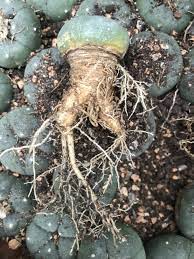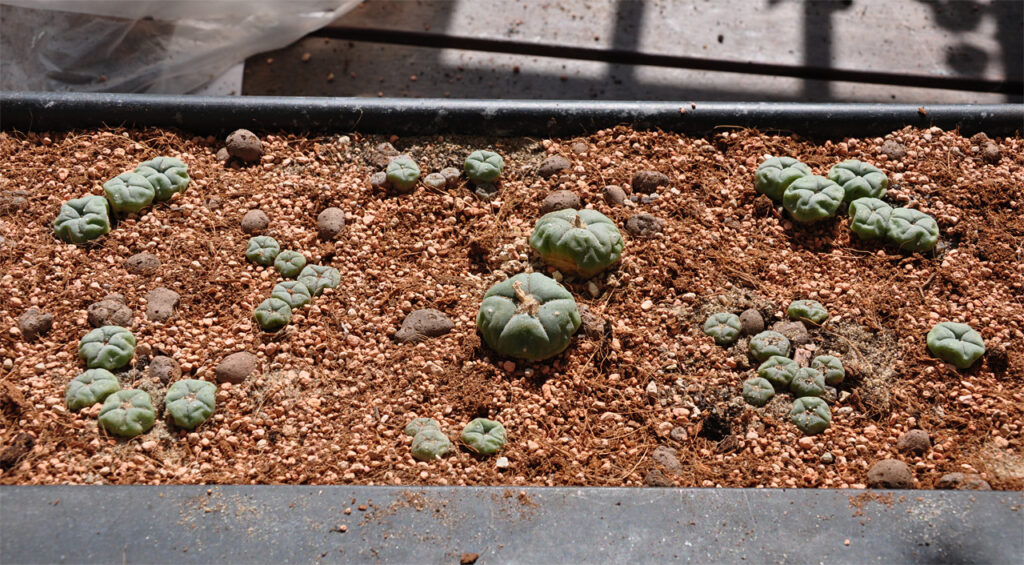Uncategorized
Exploring Mescaline-Containing Cacti: A Comprehensive Guide to San Pedro and Other Psychedelic Cacti
Introduction
Mescaline, a powerful psychedelic compound, has intrigued humans for centuries due to its profound effects on perception, consciousness, and emotional states. Found naturally in several cacti species, mescaline has been used in various cultural, spiritual, and therapeutic contexts. This comprehensive guide delves into the cacti that contain mescaline, focusing on the San Pedro cactus and other mescaline-bearing varieties, examining their effects, uses, and significance.
1. Understanding Mescaline
Mescaline is a naturally occurring psychedelic alkaloid with a long history of use among indigenous peoples, particularly in the Americas. It is classified as a hallucinogen and has been used in spiritual and ritualistic contexts for its ability to induce altered states of consciousness.

1.1. Chemical Properties
Mescaline’s chemical structure is similar to other hallucinogens, such as LSD and psilocybin. It primarily acts on serotonin receptors in the brain, leading to changes in sensory perception, mood, and cognition. Its effects typically include vivid visual and auditory hallucinations, altered time perception, and deep emotional experiences.
1.2. Effects and Duration
The effects of mescaline can last between 6 to 12 hours, depending on the dose and individual sensitivity. Users often report enhanced sensory perception, emotional introspection, and a sense of connectedness with their surroundings. The experience can be profound, leading to personal insights and transformative experiences.
2. Cacti Containing Mescaline
Several cacti species contain mescaline, each with unique characteristics and varying concentrations of the compound. The primary cacti known for their mescaline content include the San Pedro cactus, Peyote cactus, and Peruvian Torch cactus.
2.1. San Pedro Cactus (Echinopsis pachanoi)
- Description: The San Pedro cactus is a tall, columnar cactus native to the Andes Mountains in South America. It can grow up to 20 feet in height and has ribbed, greenish stems with small, areole-based spines.
- Mescaline Content: San Pedro contains moderate levels of mescaline, making it a popular choice for those seeking a psychedelic experience. Its mescaline concentration can vary depending on the plant’s age, environment, and cultivation conditions.
- Uses: Traditionally used in Andean spiritual practices and shamanic rituals, San Pedro is valued for its ability to induce altered states of consciousness and facilitate personal insights. It is often consumed in the form of a brewed tea or extract.
2.2. Peyote Cactus (Lophophora williamsii)
- Description: Peyote is a small, spineless cactus with a button-like appearance, native to the Chihuahuan Desert in Mexico and the southwestern United States. It typically grows close to the ground and is characterized by its round, flattened shape and small, ribbed surfaces.
- Mescaline Content: Peyote is renowned for its high mescaline concentration, making it one of the most potent mescaline sources. It has been used for thousands of years in Native American religious ceremonies and healing practices.
- Uses: Peyote is often consumed in its dried button form, either chewed directly or brewed into a tea. Its powerful effects are used in spiritual ceremonies to facilitate vision quests and personal revelations.

2.3. Peruvian Torch Cactus (Echinopsis peruviana)
- Description: The Peruvian Torch cactus is another columnar cactus similar to San Pedro, native to the high Andes of Peru. It features ribbed, green stems and can grow to considerable heights.
- Mescaline Content: Peruvian Torch contains significant levels of mescaline, although generally less than Peyote. It is valued for its ability to produce vivid hallucinations and intense introspective experiences.
- Uses: Like San Pedro, Peruvian Torch is used in traditional Andean practices and modern spiritual exploration. It is typically prepared as a tea or extract.
2.4. Bolivian Torch Cactus (Echinopsis lageniformis)
- Description: The Bolivian Torch cactus is another mescaline-containing species with columnar growth, native to Bolivia. It resembles San Pedro and Peruvian Torch but has a slightly different appearance and growth habit.
- Mescaline Content: Bolivian Torch also contains mescaline, though its concentration can vary. It is known for its potent effects and is used similarly to San Pedro and Peruvian Torch.
- Uses: Bolivian Torch is used in both traditional and contemporary settings for its psychedelic properties. It is commonly prepared as a tea or extract.
3. San Pedro Cactus: A Closer Look
San Pedro cactus has a rich cultural history and is highly regarded for its psychoactive properties. Let’s explore its uses, preparation methods, and cultural significance in more detail.
3.1. Traditional Uses and Cultural Significance
San Pedro has been used for over 3,000 years by indigenous peoples in the Andes. It plays a central role in traditional Andean spirituality, where it is employed in rituals to connect with the divine, seek guidance, and promote healing. Shamanic ceremonies involving San Pedro often include chanting, drumming, and other ceremonial practices aimed at inducing visionary experiences.
3.2. Preparation and Consumption
- Preparation: To prepare San Pedro for consumption, the cactus is typically peeled and cut into small pieces. These pieces are then boiled in water for several hours to create a potent tea. The preparation process extracts the mescaline and other psychoactive compounds from the cactus.
- Dosage: The potency of San Pedro can vary, so dosage is critical. A typical dose ranges from 20 to 40 grams of dried cactus material, but it is essential to start with a lower dose and adjust as needed based on individual sensitivity.
3.3. Effects and Experience
The effects of San Pedro are similar to those of other mescaline-containing cacti. Users may experience visual and auditory hallucinations, emotional release, and a sense of unity with their surroundings. The experience can be profound and introspective, often leading to personal insights and spiritual revelations.
4. Legal and Safety Considerations
The legality of mescaline-containing cacti varies by country and region. In many places, the cultivation and use of these cacti for ornamental purposes are legal, but their psychoactive properties may be regulated or prohibited.
4.1. Legal Status
- United States: Mescaline is classified as a Schedule I controlled substance, making its use and extraction illegal. However, the cultivation of certain mescaline-containing cacti, like San Pedro, is often allowed for ornamental purposes.
- Canada: Mescaline is also a controlled substance, and its use is regulated. The cultivation of cacti like San Pedro may be legal, but their psychoactive use is prohibited.
- Other Countries: Legal status varies widely. In some countries, mescaline-containing cacti are legal to grow and use for ornamental purposes, while in others, their psychoactive use is strictly regulated.
4.2. Safety and Harm Reduction
When using mescaline-containing cacti, it is essential to prioritize safety and harm reduction. This includes understanding the potential effects, starting with a low dose, and ensuring a safe and supportive environment for the experience. Consulting with experienced individuals or professionals can also help mitigate risks and enhance the overall experience.
5. The Future of Psychedelic Cacti
As interest in psychedelics grows, research into the therapeutic potential of mescaline and other psychedelic compounds continues to expand. Studies are exploring the use of psychedelics in treating mental health conditions, such as depression, PTSD, and anxiety.

5.1. Therapeutic Potential
Psychedelic research has shown promising results in using substances like mescaline to facilitate emotional healing, enhance personal insight, and improve mental health outcomes. Ongoing studies aim to better understand the therapeutic benefits and mechanisms of these compounds.
5.2. Cultural Relevance and Modern Use
The modern resurgence of interest in psychedelic cacti reflects a broader exploration of consciousness and spirituality. Contemporary users are rediscovering the profound experiences these plants offer and integrating them into personal growth and spiritual practices.
Conclusion
Mescaline-containing cacti, including the San Pedro cactus, Peyote cactus, and Peruvian Torch cactus, offer a rich tapestry of cultural, spiritual, and psychoactive experiences. Understanding the characteristics, preparation, and effects of these cacti provides valuable insights into their significance and potential. As research and cultural interest continue to evolve, the role of psychedelic cacti in personal and therapeutic contexts remains a fascinating and dynamic field.
Whether exploring the traditional uses of San Pedro or delving into the broader world of mescaline-containing cacti, this guide serves as a comprehensive resource for those interested in the profound and transformative potential of these remarkable plants.
